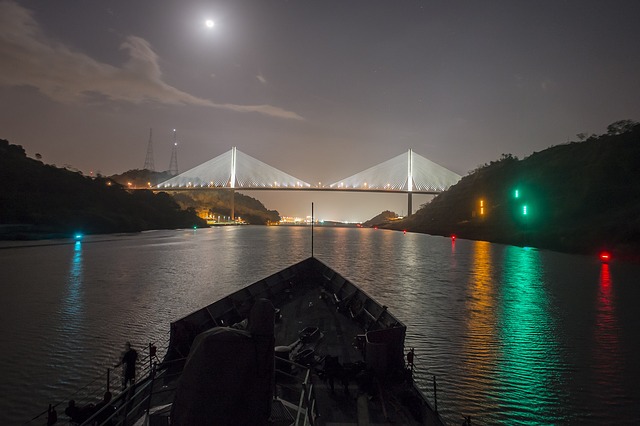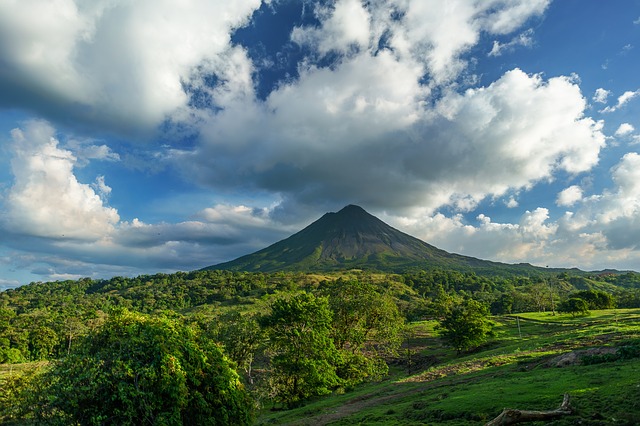The fact that Costa Rica and Panama are close makes both countries perfect for visiting. During your holiday there, it’s easy to travel back and forth between the two countries and enjoy all the wonders they have to offer. Keep in mind that the timing of your holiday will influence what sorts of sites you can visit and what activities you can make part of your plans. By understanding a little about what to expect, it’s easy to determine the best time of year to visit both countries, based on what you would like to do.
Learning More About the Dry and Rainy Seasons
If you’re the type who prefers the hustle and bustle that comes with holidays during the tourist season, plan on being in Costa Rica and Panama during what’s known as the dry season. Expect plenty of sunshine and warm weather during this part of the year. Many of your activities will be outdoors, although you will find a number of indoor sites that you will want to include in your plans.
The dry seasons in both countries overlap. The dry weather for both typically arrives during the first to the middle part of December. In Costa Rica, the dry season usually lingers until sometime in April. Panama enjoys a slightly shorter dry season, with it usually ending sometime in March.
Keep in mind that since this dry period is the height of the tourist season, the cost of visiting from December to April will be higher than at other times of the year. Even so, if your plans include spending a lot of time exploring the rain forests or soaking in the rays on one or more of the beautiful beaches, the dry season is the only time to consider.
Making the Most of the Dry Seasons
During the dry season in both nations, do expect the weather to be more humid and the day temperatures to be a little higher. There is some variance depending on which regions you plan on visiting. As a general rule, locations nearer the coast will include warmer weather and higher levels of humidity. By contrast, the more mountainous areas will offer slightly cooler temperatures and lower humidity levels.
During this time, do plan on enjoying the lush greenery found in the rain forests. During much of the dry season, the abundance of rain from what’s known as the rainy or green season ensures that the forests are at their best. Consider adding some variety to your holiday by spending time at the beach, soaking in the nightlife along the coast, and doing some shopping at many of the open air districts. This is also the perfect timing to enjoy some of the local cuisine while dining outside.
There are special events to celebrate during the dry season. President’s Day in Costa Rica occurs during this period. Along with locals, you can enjoy a number of celebrations, open-air festivals, and just about any type of entertainment that one can imagine.
Since the dry season does attract more tourists, it pays to book your lodgings in advance. Along with President’s Day, there’s also spring break and the Easter Season to consider. While you could look at different hotels and other properties near beaches, there are also hostels that make perfect places to sleep. After all, how much time do you plan on spending indoors when there’s so much to do?
Things to Do During the Rainy Seasons
In spite of the name, it isn’t always raining during the rainy or green season. Most days, there will be brief periods of sunshine that do allow you to spend some time at the beach and other outdoor venues. Do expect the evenings to be cooler. At times, the temperature may make wearing long sleeves or possibly a sweater a good idea.
Even if you’re out and about while it’s raining, there are plenty of things to see. Towns and cities in both nations offer indoor concerts, a number of restaurants catering to all sorts of tastes, and clubs and other settings for entertainment. You will find museums that will tell you more about the history of indigenous peoples and the complexity of their cultures.
What are some of the activities you can enjoy during this time of year? Both Costa Rica and Panama offer options to go horseback riding. Generally, this will happen during the morning when the sun is most likely to be out. Walking tours are also a great way to learn more about the culture and possibly find some interesting places that you will want to return to a little later. Don’t overlook the opportunity to get in some fishing when there’s a sunny morning coming your way. There are changes to engage in freshwater fishing as well as charter boats that will take you to some of the better places to enjoy salt-water fishing.
Coffee and rum tours are also something to consider during the rainy season. These tours allow you the opportunity to see different facilities and how they produce their products. As a bonus, you get to enjoy some taste-testing at many of the places that you visit along the tour. Some of the sites will also have bistros or restaurants included, allowing you to enjoy a nice meal or snack with your coffee or rum.
In terms of museums to visit, San Jose offers some of the most interesting museums in Costa Rica. Many of them are located in or adjacent to what’s known as the Central Market. It’s a great way to enjoy time indoors during the rainy afternoons and early evenings.

In Panama, check out the Panama Canal Museum in Casco Viejo. You can make use of headphones that offer the guided tour in multiple languages. If you happen to be proficient in Spanish, feel free to check out each exhibit on your own. You can also check out the Biodiversity Museum, which features exhibits on the over 1,000 species of animals and plants that are found in the country. Make the most of the discounts offered on Sundays. Retirees also get to enjoy discounts when visiting these museums.
Which season is the best time to visit Costa Rica and Panama? It’s really up to you. For those who prefer a slower pace and don’t mind rain during the afternoons and evenings, the raining season is ideal. Those who thrive on activity, sunshine, and plenty of tourist activities will enjoy going during the dry season. Whatever your choice, plan on coming back a second time. It’s rare for anyone to see everything they want to see during a single holiday.
